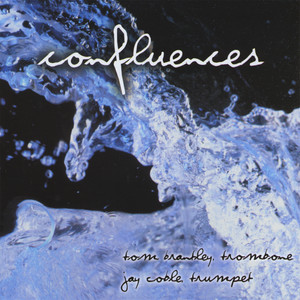
- 歌曲
- 时长
-
Divertimento
-
Concertino
-
Confluences
-
Cosi Fan Tutte, K. 588
-
Fidelio, Op. 72
-
La Boheme
简介
Divertimento for Trumpet, Trombone, and Piano - These seven character pieces are representative of Blacher's work in their playfulness and transparency. Various combinations of this trio are employed; three movements for the trio, one for the trombone and piano, one for trumpet and piano, and one for solo piano. All of the movements are carefully constructed in their motivic content. Although of German descent, Blacher was more influenced by French composers. The Divertimento also exhibits the influence that jazz had on the composer. Jacques Casterede (b. 1926) attended the Paris Conservatory, won the Prix de Rome in 1953, and began teaching at the Conservatory in 1960. The three movement Concertino for Trumpet and Trombone was composed in 1958. The first and third movements involve mixed meter and use the trumpet and trombone in a highly imitative fashion. The second movement is a beautiful contrast to the outer movements. It begins with an almost spiritual melody in the trombone. This meditative quality is continued by the melody given to a cup-muted trumpet. Casterede's Concertino is a staple in the trumpet/trombone literature. Chuck Owen's Confluences was commissioned specifically for this recording project. Confluence is primarily defined in the American Heritage Dictionary as a "flowing together of two or more streams" but also includes the more generic, " a gathering together". While the latter definition might seem more appropriate in a musical work, Owen used this title primarily because of its associations with rivers. Just as rivers change and alter course, Owen wanted the collective improvisation to result in a piece that never sounds the same from performance to performance, continuing to evolve over time. The major confluence here is the joining of the Brantley and Coble rivers; however, there are others as well: the strings and the brass, jazz and classical, improvised and scored. The movements reflect an interest in Mark Twain's associations with rivers as well: Samuel Clemens even selected a pen name that is a measurement of a river's length. Herbert Lincoln Clarke (1867-1945) was featured soloist with the John Philip Sousa Band. He composed many solos to display his amazing technique. cousins was written as a duet for himself and Sousa's trombone virtuoso, Arthur Pryor, and is typical of a solo piece of the era. A cadenza at the beginning of the piece allows the soloists to showcase their technical ability. Cousins then provides sections of varying tempi and style. Three Opera Arias, arranged for Trumpet and Trombone by Jay Coble, provides instrumentalists a chance to play some of the most beautiful music from the opera tradition. Coble selected arias from Mozarts's Cosi fan Tutte, Beethoven's Fidelio, and Puccini's La boheme- some of the beloved and easily indentifiable arias- to offer brass musicians the opportunity to perform in an idiom that is generally unavailable to them. And the ending of the Puccini classic makes for an appropriate end to a recording-musicans walk offstage for the final phrase.

